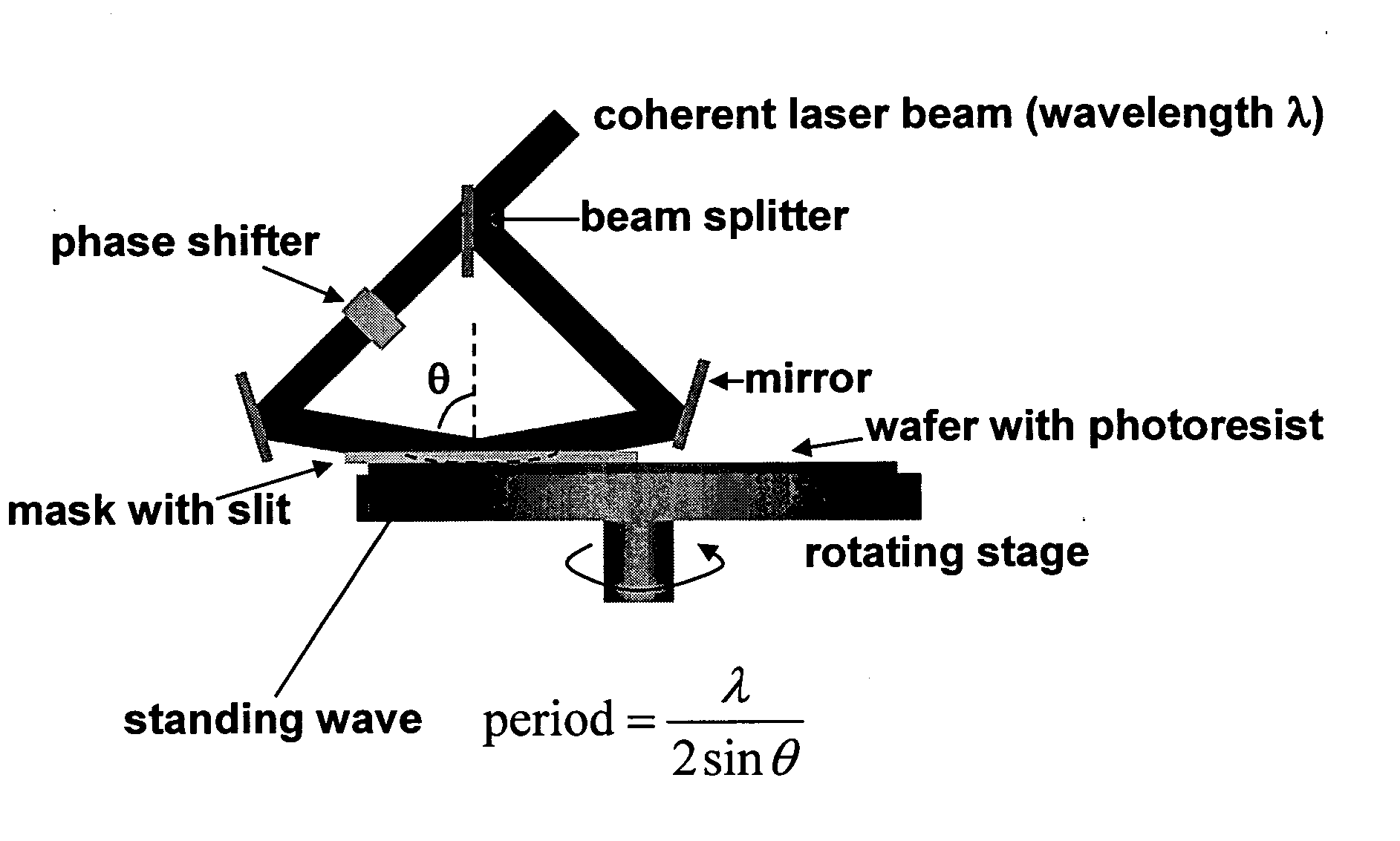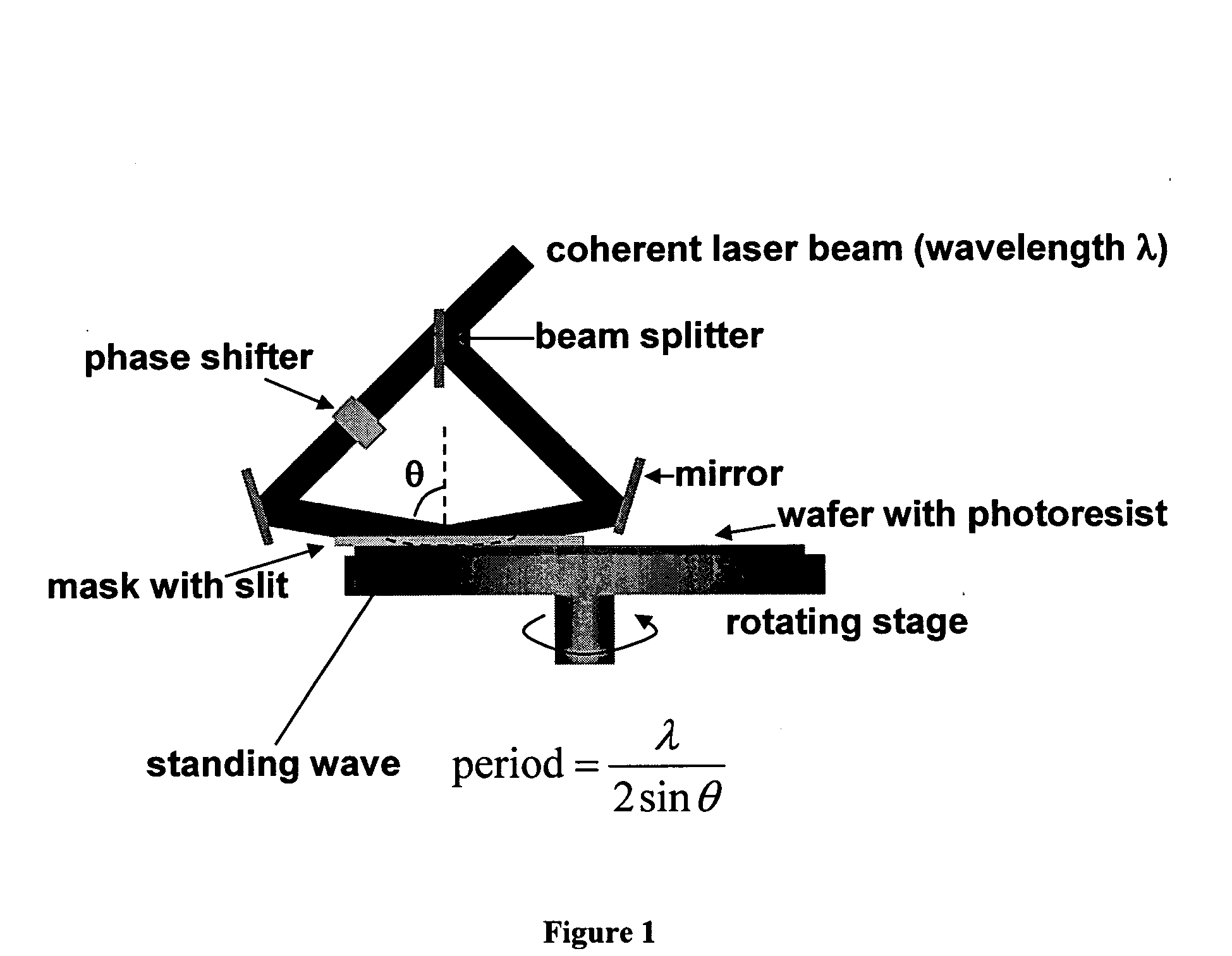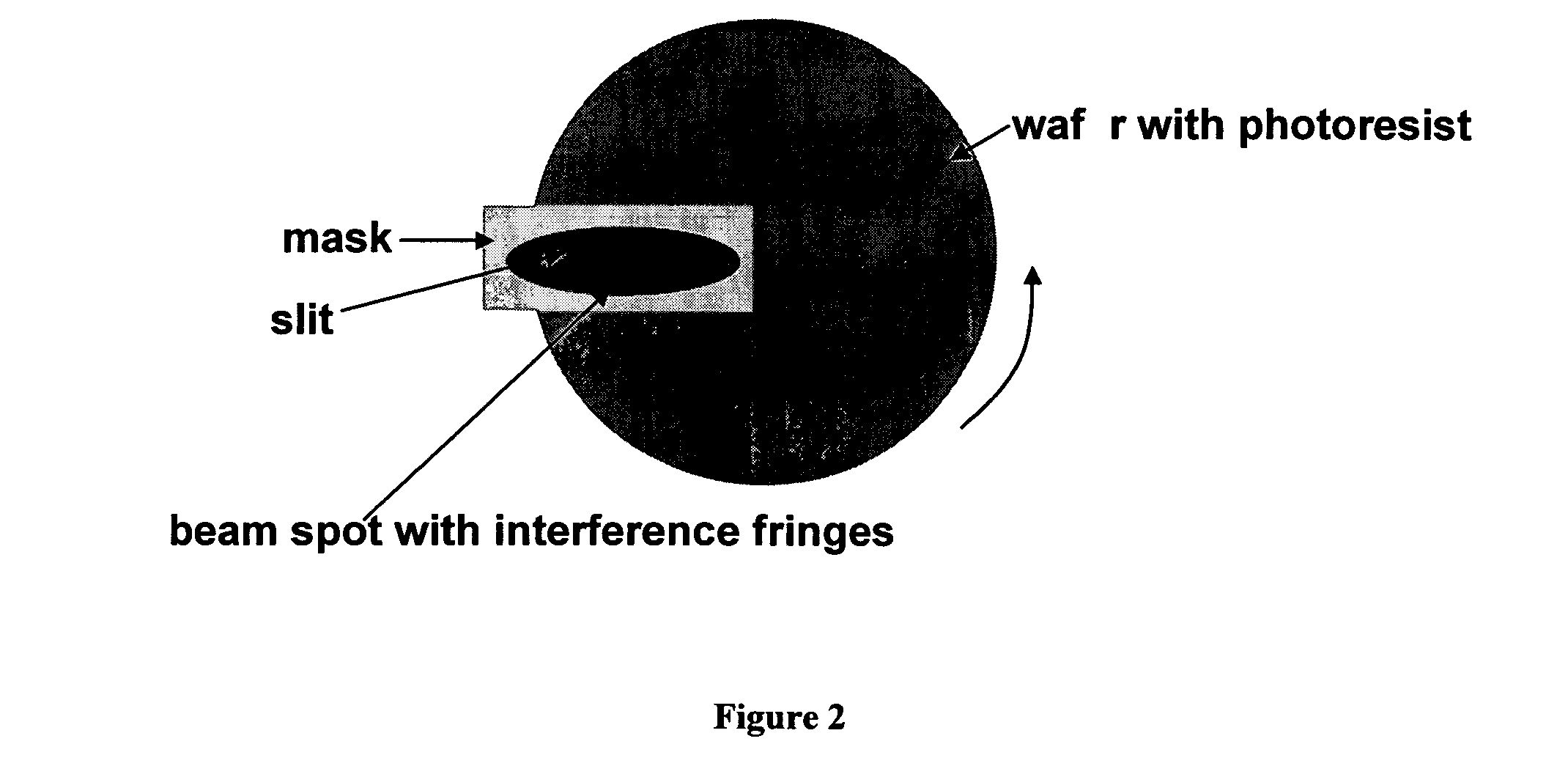Rotary apertured interferometric lithography (RAIL)
a technology of interferometry and lithography, which is applied in the direction of photomechanical equipment, instruments, printers, etc., can solve the problems of reducing the signal-to-noise ratio, affecting the accuracy of lithography,
- Summary
- Abstract
- Description
- Claims
- Application Information
AI Technical Summary
Benefits of technology
Problems solved by technology
Method used
Image
Examples
Embodiment Construction
This invention differs from prior systems by allowing precise trackpitch determined by the wavelength of the laser used and the incident angle of two beams, with much better trackpitch variation than the prior systems. It can make patterns required for the master for Contact-print Servo Patterned Media (CSPM).
The method of performing RAIL and calibrating MR head geometry in self-servo writing disc drives is described in the U.S. Pat. No. 6,317,285 incorporated herein by reference.
For the master of CSPM, one preferred requirement is the trackpitch variation, and it is determined by the interference optics and not affected by the environmental disturbance significantly in the present invention.
The present invention has an additional benefit of reducing the time required for recording a master, since it can be done in a single rotation of the rotating stage, as opposed to hundreds of thousands of rotations required in the prior arts using a LBR or EBR.
Briefly, the RAIL process...
PUM
| Property | Measurement | Unit |
|---|---|---|
| size | aaaaa | aaaaa |
| size | aaaaa | aaaaa |
| exposure time | aaaaa | aaaaa |
Abstract
Description
Claims
Application Information
 Login to View More
Login to View More - R&D
- Intellectual Property
- Life Sciences
- Materials
- Tech Scout
- Unparalleled Data Quality
- Higher Quality Content
- 60% Fewer Hallucinations
Browse by: Latest US Patents, China's latest patents, Technical Efficacy Thesaurus, Application Domain, Technology Topic, Popular Technical Reports.
© 2025 PatSnap. All rights reserved.Legal|Privacy policy|Modern Slavery Act Transparency Statement|Sitemap|About US| Contact US: help@patsnap.com



